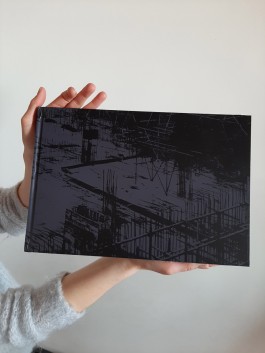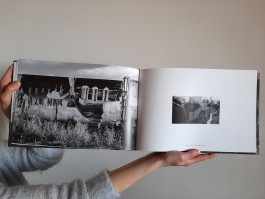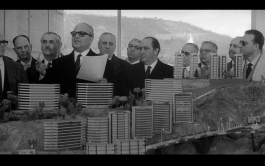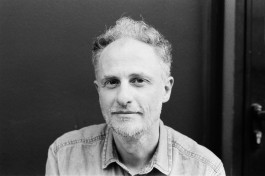'The Post-war Dream' by Alessandro Zanoni (2018)
Italy in the boom years and China in the last two decades share many aspects such as reconstruction, a future-oriented perspective, metropolitan expansion, the illusion of endless growth, development that is confused with progress. After spending an art residency in 2016, in the Inner Mongolia Autonomous Region, making photos to document the transformation process of the most important cities in the region: Ordos, Hohhot, and Baotou Alessandro Zanoni decide to further investigate the astonishing similarities with the Italian post-war season effectively . Surprisingly, these images recalled me the post second world war Italian film season that wished to raise awareness on the booming developments surrounding the historic cities of Italy. The shocking similarity between images made over 50 years away, testify to a dominant, globalized and normalized character of these settlement processes. There is a common denominator, which seems to cancel the geography and the temporal distance between the events told by my visual-journey. The gaze moves in silent and mysterious places that seem to push the viewer beyond the empirical evidence towards an almost dreamlike dimension. Or a "post dream" scenario. .
urbanauticainstitute.com (sold out)
urbanautica.com (review)







'The Post-war Dream' by Alessandro Zanoni (2018)
Italy in the boom years and China in the last two decades share many aspects such as reconstruction, a future-oriented perspective, metropolitan expansion, the illusion of endless growth, development that is confused with progress. After spending an art residency in 2016, in the Inner Mongolia Autonomous Region, making photos to document the transformation process of the most important cities in the region: Ordos, Hohhot, and Baotou Alessandro Zanoni decide to further investigate the astonishing similarities with the Italian post-war season effectively . Surprisingly, these images recalled me the post second world war Italian film season that wished to raise awareness on the booming developments surrounding the historic cities of Italy. The shocking similarity between images made over 50 years away, testify to a dominant, globalized and normalized character of these settlement processes. There is a common denominator, which seems to cancel the geography and the temporal distance between the events told by my visual-journey. The gaze moves in silent and mysterious places that seem to push the viewer beyond the empirical evidence towards an almost dreamlike dimension. Or a "post dream" scenario. .
urbanauticainstitute.com (sold out)
urbanautica.com (review)







